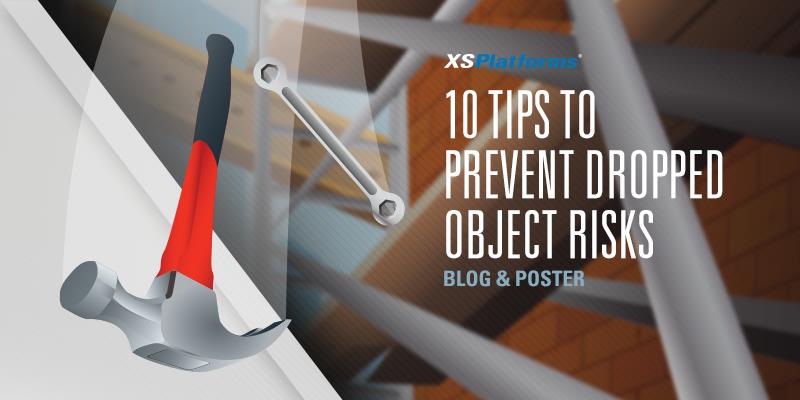
Working at height always brings risks of falling from height. But not only people can fall. Construction materials, tools, bolts, it only takes a little nudge or fumble and an object can slip and fall down. We call this, work at height hazards and falling tools can definitely be fatal.
Dropping a tool is at the very least inconvenient. But dropping a tool from height poses a danger to all those below. The impact of a falling object can have devastating consequences. Not just for causing damage to other equipment or property, but also for harming or fatally injuring workers or even members of the general public.
Nobody wants to be the one who messed up and caused someone else harm. But dropping tools isn’t only dangerous for workers down below. As humans we sometimes have a knee-jerk reaction to catch something when we drop it. While working at height this reflex could cause someone to lose their balance, possibly falling right after their tool.
Eliminate dropped object hazards
Many countries have rules and regulations for preventing falling objects, where employers are responsible for managing the risks of injury due to a fallen object. However, in many cases the measures aren’t up to standard or aren’t taken at all.
The consequences of a dropped object are not as straightforward as the dangers of falling from height, and thus awareness levels are relatively low. But did you know that a 2 kg (4,4 lbs) claw hammer dropped from 6 meters (19 ft) high has an impact of roughly a concrete mixer? Or that a 220 grams (0,5 lbs) bolt dropped from 23 meters (75 ft) high feels like getting hit with a 50 kg (110 lbs) cement bag?

In both of these cases a hard hat will not protect the wearer enough from the falling object. Thus other measures have to be taken to contain or catch falling objects.
Fall protection plan
While PPE will protect your workers in some situations, there are plenty of situations where an object can fall from 10 stories or higher. Therefore preventing objects from falling is the best solution.
Start by making a complete fall protection plan, in which you determine all the hazards on site and the protective measures to protect workers, at height ánd on the ground. Be sure to also include how you will prevent tools from falling in your fall protection plan. When considering options identify the types of objects that can fall on the worksite. Next to this also try to determine the angle and distance that objects can fall.
Safety measures
Where you can, put measures in place to prevent objects from falling. This can be done with procedural controls; behavior and procedures that change the way you work so objects can’t fall in the first place. A good example of a procedural control is good housekeeping. Keep construction materials and tools away from edges, ensure that materials are only stacked on flat surfaces, make sure the workplace is kept clean etc.
Another way of preventing falling objects are physical controls, such as toeboards and tool lanyards. With tool lanyards tools can be securely attached to either a fixed anchor point on the structure or on the person using them, preventing them from falling down.
If you can’t prevent objects from falling make sure you stop them or make sure that where they fall they cannot cause any damage. This can be done with safety nets and exclusion zones. However these are the least preferred methods because objects rarely fall straight down.
Download – Work at height hazards poster
Fall protection, for both people and objects, must be addressed before an incident to help keep employees and passersby safe where work at height is conducted.
Download our 10 best practices for preventing object fall hazards to improve safety in your worksite. And if you have any questions our doubts about safety onsite, please provide us with a call!
1 Comment. Leave new
Great suggestions for safe working conditions